Driving "Wave" on the shore of the enemy. Part three
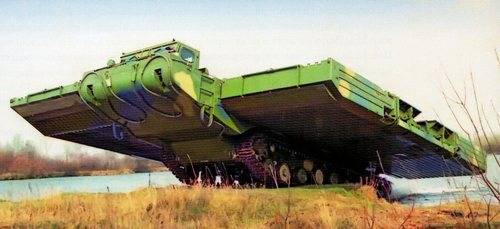
PMM Machine - 2T
Let's say right away that this is not a combat vehicle - this is a simulator. Its creation at the plant began after the chief designer E. Lenzus arrived from another trip to Moscow.
Yevgeny Evgenievich invited Yury Ostapets, Head of the Measurement Bureau, to his office and told him that he had seen a simulator in Nakhabino for training drivers to work on TCP. After all, the cars are expensive and it is better to start training young drivers on the simulator. The chief designer finished his story with the following words: “We were offered to consider the possibility of creating a similar simulator for the PMM - 2. I said that we will do no worse. So there is nowhere to retreat. ” At the request of Ostapts to tell about the simulator in more detail, E. Lenzius replied: “Get ready for a business trip. It is better to see once ... ".
As they say, I went, looked and realized that the work on the new simulator was on the back of the designers of the plant. Began to work out the idea. The design of the main and defining simulators was entrusted to the measurement bureau. Designing simulators of pontoons, ramps, opening mechanisms and terrain was entrusted to the design departments, as they say, according to their affiliation. A television system was chosen as a device for modeling the visual environment. The system consisted of two television monitors and a trolley that moved around the model of the terrain with the help of electric motors. Its speed varied depending on the transmission and engine speed. A small-sized video camera was installed on the trolley, transmitting to TVs a picture of the road situation from the layout.
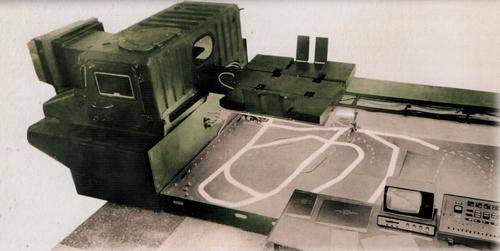
The simulator cabin was taken from the serial machine with the appropriate refinement. Controls, measuring devices were also regular. Simulators of hydraulic distributors had the same effect on the learner’s hand as in a car. Road conditions, temperature conditions (winter - summer), engine preheating in winter were simulated, the opening of pontoons, ramps, i.e. the most important points of the learning process, was imitated in full. The errors of the trainees were recorded on the teacher’s point automatically.
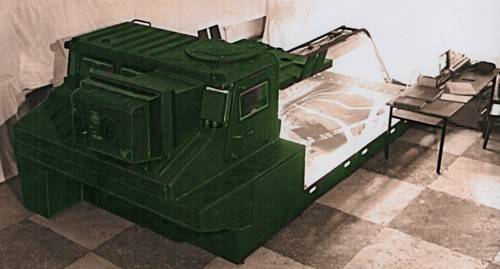
It should be noted here that the production of electronic blocks of prototypes was carried out with the use of amateur radio technology by the specialists of the bureau, which was not suitable for production if the release became serial.
- Will we not put ourselves and production workers on our knees if the customer accepts the product? We collected here what these experienced simulators were able to do, invented a lot themselves, and then where will we get the components? - doubted Victor Andreevich Vlaskin, deputy chief designer.
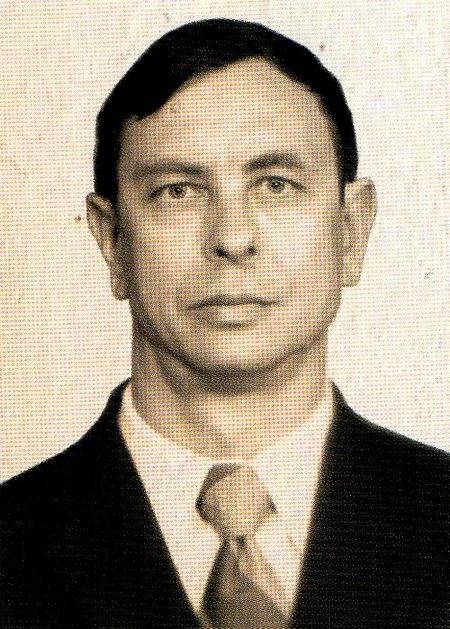
In order to facilitate the task of manufacturing electromechanical units, we still managed to place orders for the manufacture of boards at a radio factory in the nearest town of Svetlovodsk and at the Calculator plant. At first, most of the original components with which the plant did not deal with the wound were acquired by the bureau specialists themselves at the enterprises of Kharkov, Svetlovodsk, Dnepropetrovsk, Novgorod.
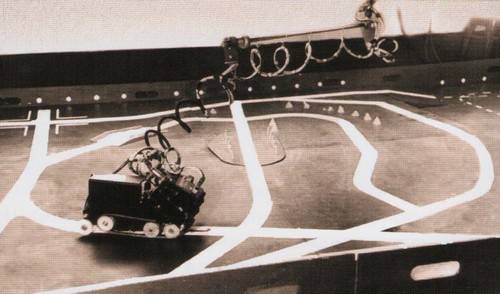
The installation of the simulator was no less difficult than the assembly of the machine itself, so the installation of the simulator at the consumer was made by factory specialists. The development of the PMM-2T simulator made it possible to maintain the lifespan of the machine, reduce the cost of the driver training process, and most importantly bring this process to a higher, modern level.
Product - 851
In the 80s. of the last century, the armed forces of the Soviet Union began to receive Tanks and other equipment of a new generation weighing 41 - 46 tons or more. Accordingly, there was a need to have crossing facilities of greater carrying capacity than PMM - 2M. In 1986, the department of the chief designer No. 2 received the terms of reference for the design of a new ferry-bridge machine with a carrying capacity of 50 tons - the product "851".
Victor Andreyevich Vlaskin, Deputy Chief Designer, was appointed to oversee the creation of the product and the project manager. He gathered bureau chiefs and leading experts and began to think about how to increase the load capacity and maintain the stability of the machine while on the water? It was clear that it was necessary to add volume to the pontoons, but how could it not increase the own weight of the car and its dimensions for transportation by rail. The solution was found unexpected and simple. In the new product, the boats or pontoons during deployment were not near the main machine, but at some distance. Thus, the total length of the bridge deck increased from 9,9 to 12 m.
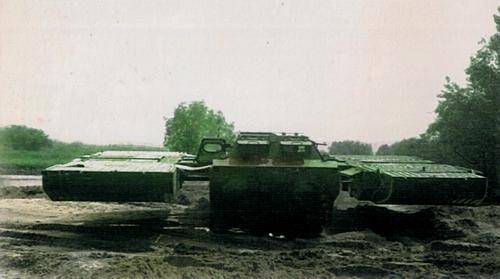
Due to the fact that a space appeared between the pontoons and the hull, the water resistance decreased, because now it flowed around not one large volume, but three small ones. Reduced water resistance - which means that you can increase the speed of the water and the stability of the machine. A prototype was made. On the space between the main machine and the pontoons, special bridges were superimposed on top - internal ramps. They were not heavy and the pontooners did it manually.
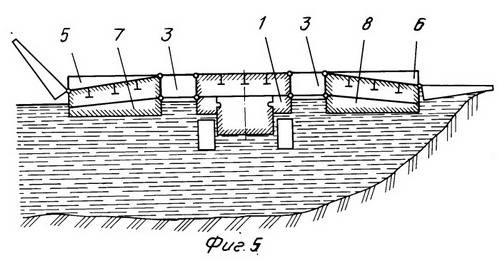
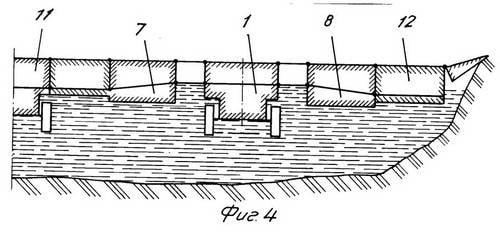
At the same time, of course, I had to significantly rework the pontoon opening mechanism. In order not to increase the weight of the machine, some parts are made of aluminum. What was done for the first time - titanium ramps. This material has a low density and high specific strength. However, the welders in the experimental workshop quickly realized that when welding titanium there are difficulties due to its high activity. When welding, it was necessary to protect not only the expanded metal of the weld, but also all strongly heated parts from the interaction with gases. Soon the issue was resolved: applied another welding in argon atmosphere.
Began the factory tests of the new machine. She showed herself very well, the results were encouraging. A second prototype was made for field testing. In the first quarter of 1992, two experimental machines were sent to Gatchina, near Leningrad.
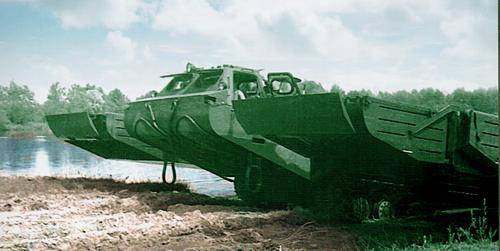
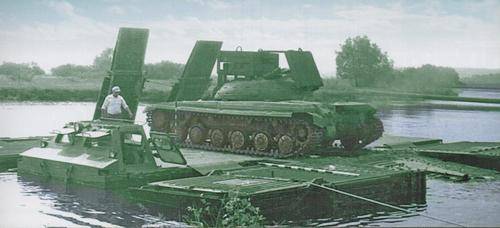
In the meantime, new political events broke into the life of the plant’s collective, every citizen of the country - the Soviet Union collapsed. Factory workers tried to return prototypes to the enterprise, but failed to do so. At least, the money for them from the Ministry of Defense was received. And the new unique development then remained unclaimed.
Instead of an epilogue
In March, 1992 was sent a letter to the plant by the Ministry of Defense of Ukraine from March 2 under the number 148 / 3 / 66. It said that Ukraine had chosen for itself a new military doctrine - defensive. And offensive weapons (which include landing-transfer means) she does not need. Therefore, the production of engineering products proposed to stop.
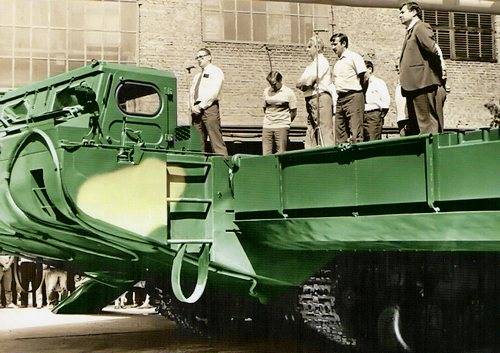
The suspension of the production of defense technology and the transition to market relations demanded efforts and will from the plant’s collective. Began the search for new products and the reorganization of production for its release. But the plant did not exclude the possibility of returning to the orders of the Ministry of Defense of Ukraine already.
Such an opportunity seemed to have appeared in 1993, when the Chinese Ministry of Defense expressed interest in the PMM-2M ferry-bridge vehicles. At the same time the contract was signed for the supply of two cars. But why should the military department of such a huge country only have two cars? Probably, in order to study the device, it is possible to copy the nodes, parts and organize their production. But then no one delved into such details, because the last batch of machines assembled at the end of 1991 - the beginning of 1992, remained unclaimed at the factory. Therefore, buyers were welcome.
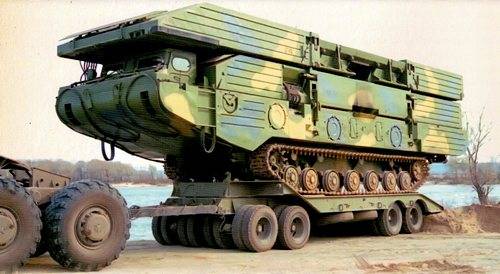
The head of the electrical equipment bureau Victor Gontar, the leading engineer of the guaranteed service bureau Victor Golovnya and the driver mechanic Sergey Shablin escorted the cars to China. They had to prepare the vehicles for operation, to train the Chinese military to work at PMM - 2M. Things went swimmingly.
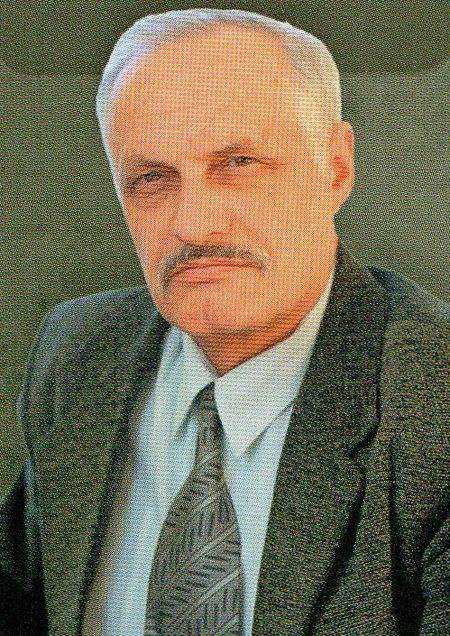
We flew to Beijing. The Chinese people greeted them cordially, at the very beginning of the work they gathered a meeting, something like a round table. In the center were specialists of the plant. The present military and civilians began to ask questions. They dealt with the design features, production technology, right up to steel grades, machine operation, etc. Then they left for the landfill, where there was a special reservoir for testing. A two-week training program was prepared for four Chinese crews. There were also representatives of various institutions, apparently, engineers. Two delegations brought buses twice: they just watched, asked to show this or that maneuver.
Mechanic - driver S. Shablin in this case was a great specialist. According to the instructions ferries should be opened on the shore and then call in the water. But Shablin on the move, from the march flew into the water. The car easily and gracefully slid along the smooth surface of the water, opening its pontoons on the move and turning into a huge floating bridge. And when the car flew out of the water at speed, carrying with it a wave that rolled off the ferry and crumbled by millions of splashes, the car seemed like a fabulous alien ship. The Chinese applauded.
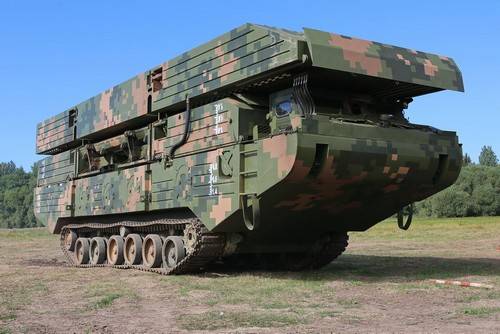
Later, the Chinese military carried out operations on entering and leaving the water, knurling and transportation of cargo - tanks. Thus, the trip was successful for both parties. But in the assembly shop, in the area of delivery there were still 16 machines. And in 1996, there was a new customer, but also a Chinese one. It was a company that planned to use PMM - 2М in the process of extracting oil and gas from the sea shelf: to bring cargo to the platforms and remove them. 25 November 1996 was signed a contract to ship the remaining 16 machines.
In the summer of 1997, the cars were ready to ship. They were loaded onto the railway platforms: the base car separately and the removed pontoons also separately. In addition, they loaded spare engines, tracks, and so on. They escorted cars around the plant, even held a rally. The contract pinned high hopes.
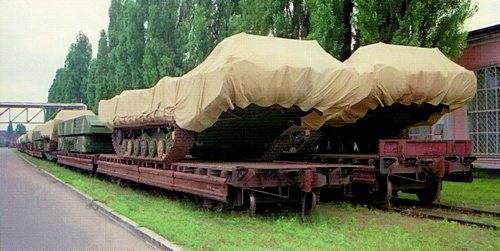
When the train approached the Chinese border, problems began with Russian customs and border guards. It turned out that the machines according to the documents are designed as dual-purpose products. In addition to the military sphere, they can be used for civilian needs. Actually, it was supposed to be used for oil production. It would seem that everything is in order.
But ... On the platforms were ferry-bridge machines PMM - 2M, which were in service with the Russian army. And besides, also painted under camouflage. While we agreed, explained, prepared the necessary documents, two months passed. Finally, the squad passed through the border. But it turned out that the term of the letter of credit had expired. Began to solve this problem.
In the meantime, a group of KHP specialists flew to China to transfer cars and to learn operating skills. We got to the place, waited for the equipment to be bought, to re-launch, install the pontoons and teach the new owners to operate floating machines. Three cars were assembled for display, the rest remained in the customs warehouse. Many representatives came - potential buyers, but no one dared to buy equipment. So half a year has passed. After the KVZ specialists were recalled to the plant.
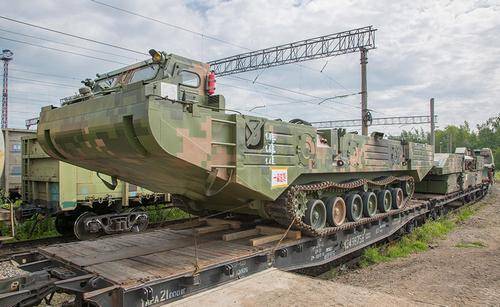
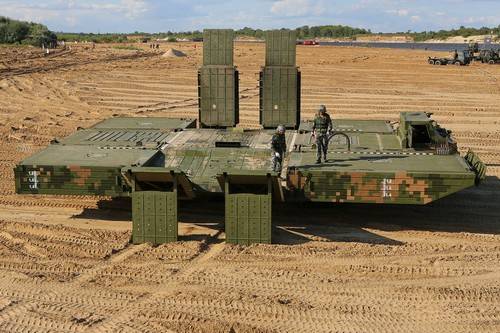
Then the case of payment for the delivered vehicles at the request of the Krukovka Carriage Works was considered by an international court. The plant won it. The Chinese side paid what was prescribed by his decision. But it was not possible to bring the matter to a logical end. The state of plant workers did not support and did not use the results of the work already done.
This latest deal, involving the amphibious assault ship, has remained a bitter bit stories factory. In those years, no one cared for anything unique, not only on a national scale, but also on the world of producing such complex machinery. The country was in full swing conversion.
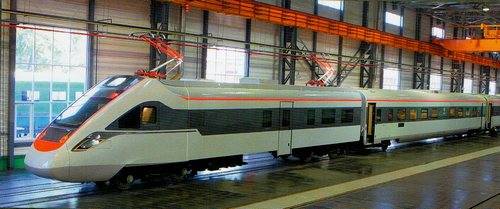
Since 1998, the plant has completely switched to the production of passenger cars. The point is, of course, good. But today there are practically no enterprises in Ukraine capable of producing engineering, and even more perepravochno – amphibious technology, from scratch. It's a shame, because you have to buy from others what you could do yourself.
With regards to the further history of the development of machines such as PMM - 2, then in the Russian army it has a continuation. We are talking about ferry-landing ferry PDP. The ferry PDP is designed and manufactured by OAO KBTM in Omsk. At the end of 2013, it was adopted by the Ministry of Defense of the Russian Federation. Self-propelled ferry PDP, designed for ferry crossing over water obstacles of tanks, missile systems, artillery systems, infantry fighting vehicles and other military equipment. The PDP complex consists of two parts: a low-strength tracked carrier (Item 561P), created using tank assemblies and assemblies, as well as the ferry itself.
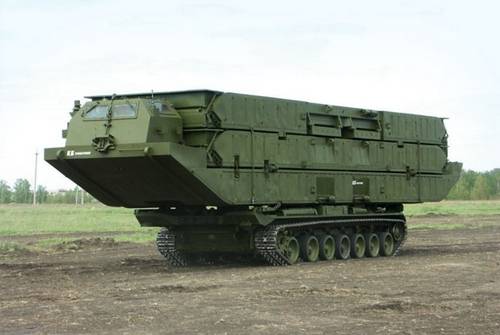
Steam PDP is a three-section design. When folded, the steam with a total weight of 29,5 tons fits into the transverse dimensions of the conveyor. When unfolded, the ferry has a length of 16,5 meters and a width of 10,3 meters.
The ferry PDP is delivered to the water barrier using a tracked carrier. The ferry is deployed on water (according to the instruction manual) or ashore (in practice, in the absence of significant irregularities at the entrance to the water) by opening the ramps of the right and left semi-vapor. While on the water, the DAP can take on cargo with a total weight of up to 60 tons. However, its sediment does not exceed 650 mm. For movement in water, the ferry has an 330 l engine. with. and propeller. The power plant is located in the stern of the ferry, and on the nose there is a crew cabin consisting of two people.
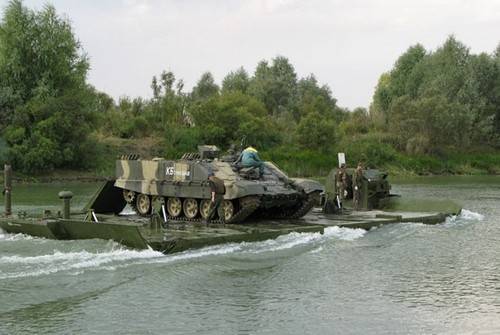
Without a load, the PDP steam can move at speeds up to 12 km / h. At full load, the maximum speed drops to 10 km / h. Fuel reserve allows you to work up to 10 hours without refueling. The PDP complex can perform its tasks at a flow rate up to 2,5 m / s and an excitement of up to two points. If necessary, the PDL ferry can be docked with the links of the PX91 pontoon fleet.
Sources:
Collection of memoirs of KHP workers. - Kremenchug, 2011
Engineering weapons vehicles H. 2, 1988
PMM-2M. Technical description and instruction manual.
Engineering amphibious assault vehicles of the USSR and Russia // Technique and armament. - No.10.- 2001.
https://archive.is/xBOJA#selection-1663.0-1711.266
http://www.arms-expo.ru/photo/fotoreportazh/pmm-2m-paromno-mostovaya-mashina/
http://www.findpatent.ru/patent/206/2069247.html
http://www.findpatent.ru/patent/206/2069246.html
http://patents.su/4-1826604-paromno-mostovaya-mashina.html
http://saper.isnet.ru/texnica/pmm-1.html
http://strangernn.dreamwidth.org/217946.html
http://www.russianarms.ru/forum/index.php?topic=2658.0
Information